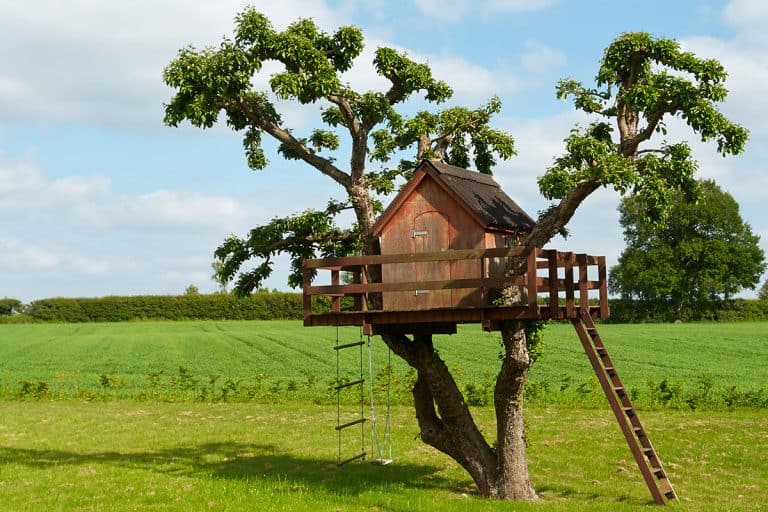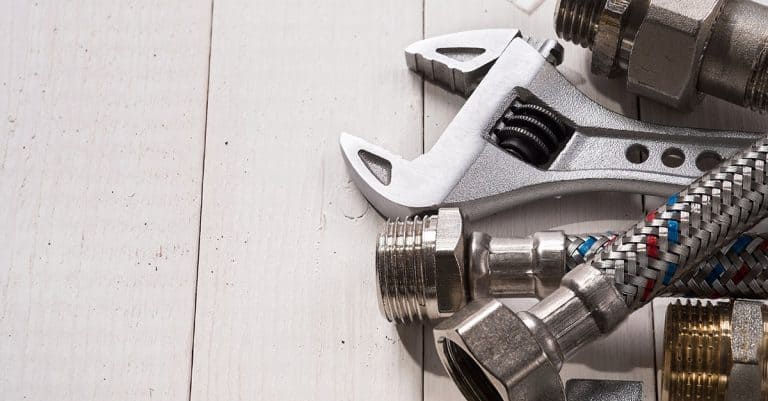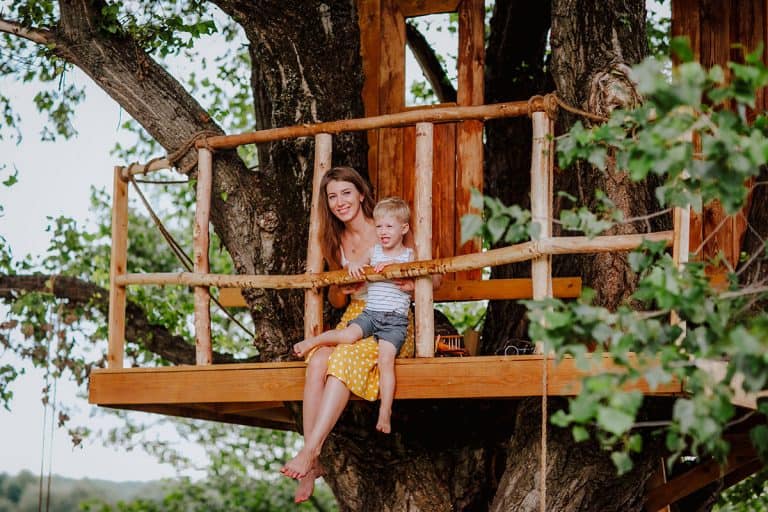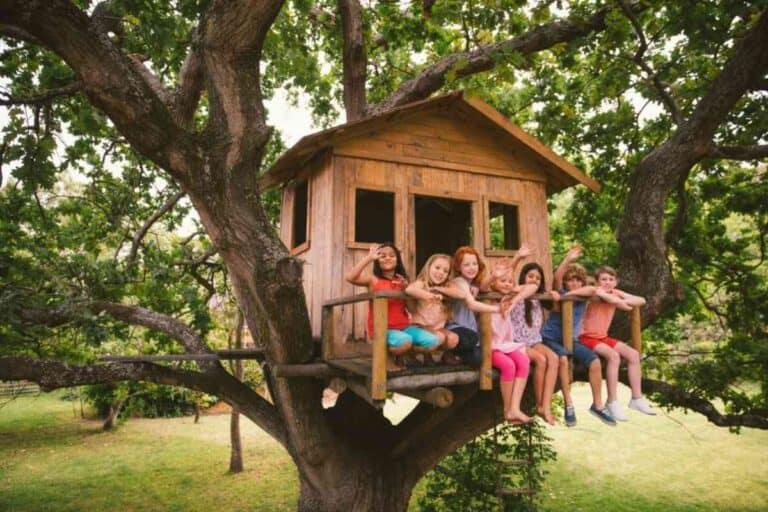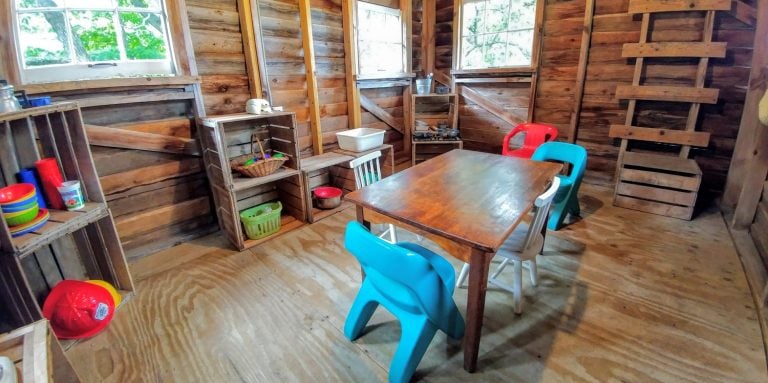How Long Will A Treehouse Last? (Answered!)
A treehouse is a big investment. It can be a place where you can go for fun.
If you consider a treehouse build, you might wonder, how long will a treehouse last?
How Long Will a Treehouse Last?
A well-constructed treehouse can last for more than 25 years. However, its life expectancy is dependent on several factors like the quality of the materials employed, the actual construction procedures, follow-up care, and weather.
If you are interested in learning more about the lifespan of treehouses and how you can increase it, continue reading as we discuss these details below.
What is the Life Expectancy of a Treehouse?
A treehouse can last for 10, 15, or even over 20 years, depending on its construction and maintenance.
However, if there is a shortage of high-quality materials, faulty mounting procedures, no constant upkeep, or severe environmental variables, the treehouse may not even last for five years.
During the earliest design phase of your treehouse construction, what you do will determine how long your treehouse will last.
Everything is crucial, from the first plans to the sorts of wood and fixtures you choose.
Below, we’ve given some crucial points to consider.
Are Treehouses Permanent?
Treehouses are not permanent.
They will last for around 25 years with proper maintenance and upkeep.
However, they may not even last five years if you use poor materials in construction or don’t follow proper guidelines while making the treehouse.
How to Increase the Lifespan of Your Treehouse?
Don’t Choose Cheap Materials (bolts, nails, lumber, shingles, etc.)
When you are short on cash and want to build a treehouse, you might decide to use cheap materials in construction. However, this will be a major mistake because choosing poor materials will jeopardize the treehouse’s longevity or, much worse, the security and safety of the people who stay there.
This is not to say that you cannot find excellent materials at a lower cost.
You can acquire them, but using low-quality materials that will quickly degrade is not a wise idea.
If you’re short on cash, don’t let it prevent you from gathering resources.
There are several excellent ways to obtain high-quality materials at a low cost.
Take a look at the examples below.
By exploring sites like Groups on Facebook, pages, and Marketplace, you can barter for the products you require.
Items like timber, window fixtures, and nettings should be easy to acquire.
See if the vendors are prepared to trade for items in your shed that are sitting on a shelf.
Secondly, you might look for people who need assistance with house or building teardowns on Craigslist and other websites
In return for your choice of products, volunteer to help out for the day.
Many common home materials, including windows, lumber, and doors, could be used in treehouses.
You can also call your local supplies and junk markets and chat with a manager to see if they need assistance sorting and arranging goods in exchange for a hoard you collect along the route.
Remember that not all firms will accept this, and many will immediately reject you; nevertheless, a promise of a day’s labor in compensation for supplies may persuade them, so there is no harm in trying.
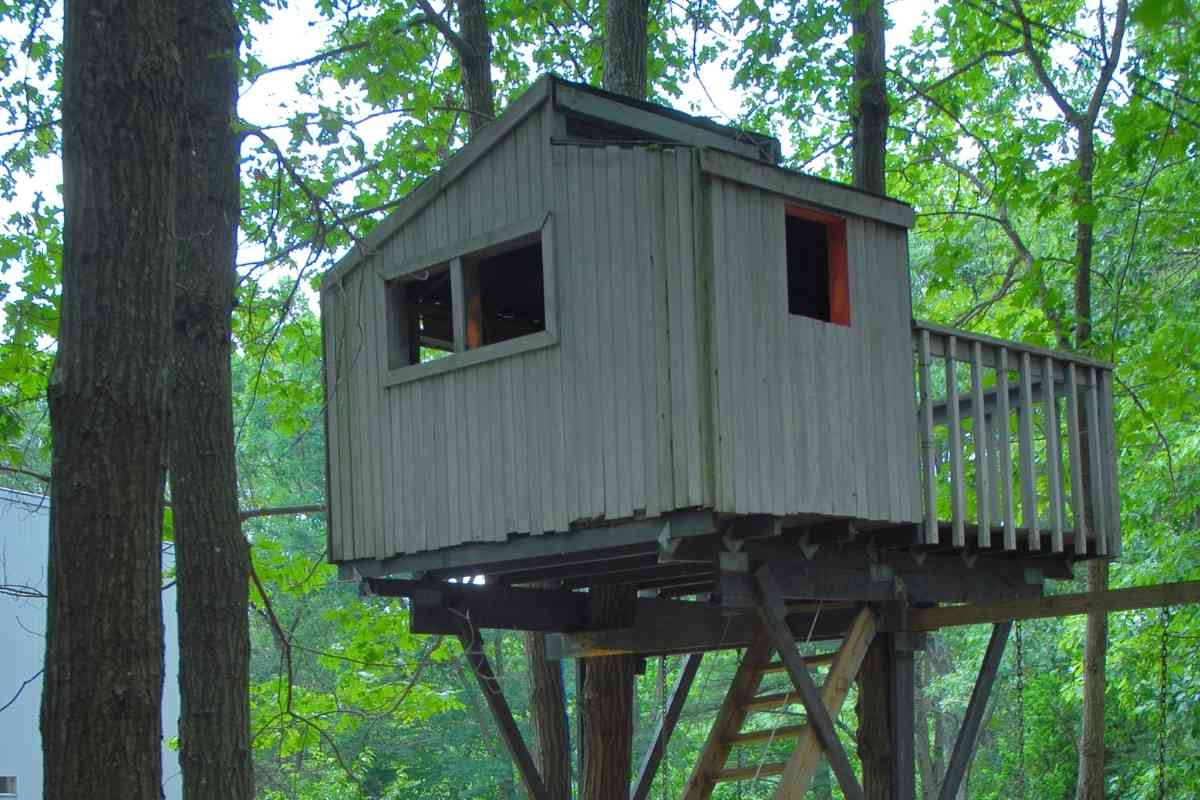
Take Help from a Professional
Suppose you intend to build a treehouse from scratch.
In that case, you should know that before accepting your idea, the regional government is likely to request an expert plan presentation from an architect or engineer as part of your initial submission.
Therefore you’ll need a suitable plan and expert for this.
When you work with a professional, you will be able to satisfy code and have a construction plan that follows best practices and established construction processes.
That kind of planning will guarantee that your treehouse lasts for more than a few years.
If you’re not prepared to spend for a professional plan, you should reconsider whether or not you’re committed to building a durable treehouse.
Understand the Weather Situation
You must understand your local weather patterns since constructing a treehouse in a cold area compared to a tropical climate can present many unique obstacles.
In tropical regions, airflow is the most crucial factor to consider.
It’s critical that a treehouse has as much open plan adjustability as feasible, along with substantial air movement.
This will lower the humidity in the room and enable more air to circulate.
Secondly, lighter, heat-resistant materials for the walls and ceilings are recommended in tropical conditions.
Rust or mildew can grow in the ceiling and walls due to an accumulation of moisture and heat.
Finally, if feasible, provide shade for your treehouse.
Anything that reduces the amount of direct sunshine on the treehouse will help decrease moisture build-up and extend the life of the treehouse.
In cooler regions, heating should be considered first.
Keeping your treehouse warm will be crucial because no one will want to utilize it if it’s too cold.
If you intend to be using the treehouse for cold day trips, consider installing wall-mounted heaters with background flame lighting to create a warm atmosphere.
Small places, such as a treehouse, are ideal for space heaters.
The clearing of snow is the second factor to consider.
Allow no snow to accumulate near your treehouse.
Melting snow can lead to water pools and mold problems, particularly in unsealed wood.
If you already have guttering, you should also be concerned about ice dams that can cause disaster when they thaw.
Finally, in cold locations, using insulated windows will help you keep your treehouse warm while lowering heating expenditures caused by heating systems.
Pay Attention to Maintenance
- Treehouses have many moving components, and they require regular care and maintenance to excel and last as long as possible. You’ll also increase the lifespan of your treehouse and protect the safety of everyone who uses it. Below we have provided some suggestions for treehouse maintenance:
- You must spray sealer on your treehouse’s wooden elements. Heat, UV radiation, rain, bugs, and erosion are just a few things that can harm the wood. You can maintain and preserve the wood for a long time by applying sealer first at the beginning of your treehouse project and then every 4-6 years after that.
- After 12 months, WD-40 or another lubricant should be applied to all moving elements of the treehouse. Spray for 5 seconds and wash away any surplus with an old rag. You’ll also need to spray it on your door hinges, panes, and other mechanical parts.
- Based on your location, termites, wasps, and other insects may invade your treehouse. Keep an eye on things to ensure it doesn’t turn into an insect refuge. Insecticides or natural alternatives can be used for this.
- It’s critical to tidy the treehouse at least once a month, based on the number of leaves and other things that have accumulated. Maintaining the place will help minimize deterioration, reduce mold and fungal growth, and prevent undesirable creatures from entering the treehouse.
What Happens to a Treehouse When the Tree Grows?
Even if the tree grows, a treehouse generally remains at the same height as it was first fixed to the tree.
However, proper up-keep is required as the tree grows to ensure that the treehouse remains stable through the changing conditions.
Does Building a Treehouse Damage the Tree?
Treehouses can certainly damage trees.
Foot traffic will compress the soil, which isn’t good for the roots.
Moreover, the weight of the treehouse can also stress the roots, and fasteners may cause infection.
Strong trees can survive this abuse, which is why only a few trees should be used to build a treehouse.

